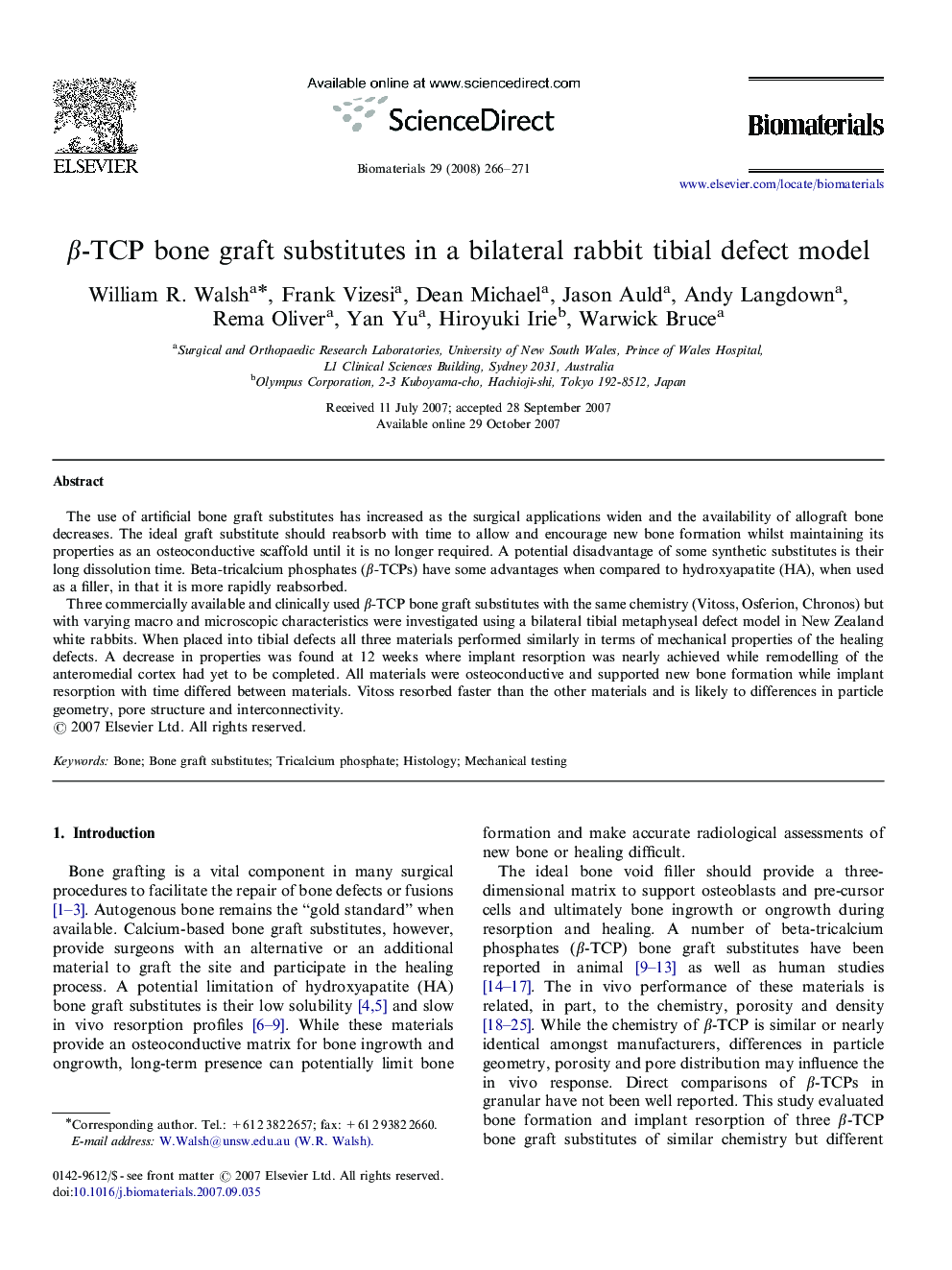| Article ID | Journal | Published Year | Pages | File Type |
|---|---|---|---|---|
| 10266 | Biomaterials | 2008 | 6 Pages |
The use of artificial bone graft substitutes has increased as the surgical applications widen and the availability of allograft bone decreases. The ideal graft substitute should reabsorb with time to allow and encourage new bone formation whilst maintaining its properties as an osteoconductive scaffold until it is no longer required. A potential disadvantage of some synthetic substitutes is their long dissolution time. Beta-tricalcium phosphates (β-TCPs) have some advantages when compared to hydroxyapatite (HA), when used as a filler, in that it is more rapidly reabsorbed.Three commercially available and clinically used β-TCP bone graft substitutes with the same chemistry (Vitoss, Osferion, Chronos) but with varying macro and microscopic characteristics were investigated using a bilateral tibial metaphyseal defect model in New Zealand white rabbits. When placed into tibial defects all three materials performed similarly in terms of mechanical properties of the healing defects. A decrease in properties was found at 12 weeks where implant resorption was nearly achieved while remodelling of the anteromedial cortex had yet to be completed. All materials were osteoconductive and supported new bone formation while implant resorption with time differed between materials. Vitoss resorbed faster than the other materials and is likely to differences in particle geometry, pore structure and interconnectivity.
